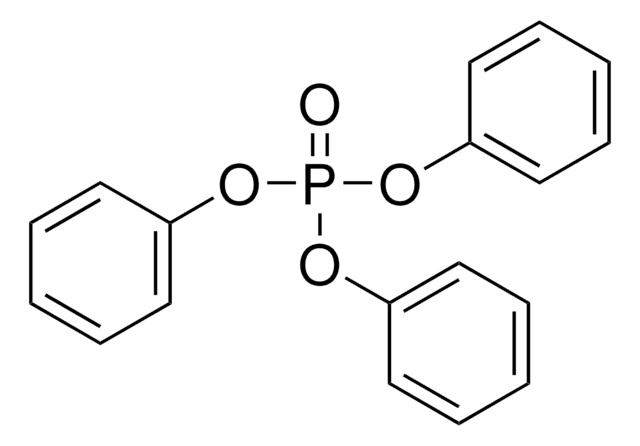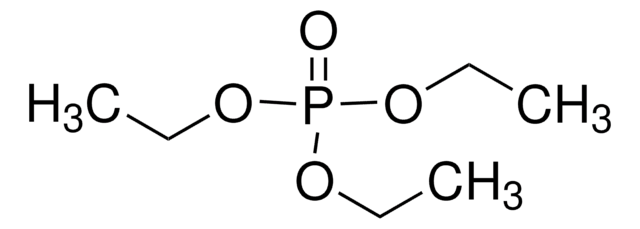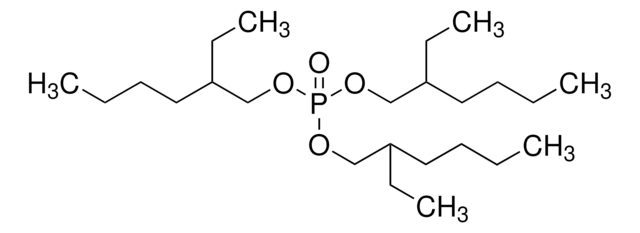About This Item
Recommended Products
vapor density
9.2 (vs air)
Quality Level
vapor pressure
27 mmHg ( 178 °C)
7.3 mmHg ( 150 °C)
Assay
≥99%
form
liquid
refractive index
n20/D 1.424 (lit.)
bp
180-183 °C/22 mmHg (lit.)
solubility
organic solvents: miscible
water: soluble (1mL in 165mL)
SMILES string
CCCCOP(=O)(OCCCC)OCCCC
InChI
1S/C12H27O4P/c1-4-7-10-14-17(13,15-11-8-5-2)16-12-9-6-3/h4-12H2,1-3H3
InChI key
STCOOQWBFONSKY-UHFFFAOYSA-N
Looking for similar products? Visit Product Comparison Guide
General description
Tributyl phosphate (TBP) is an organophosphate compound widely used as an extraction solvent, flame retardant, and plasticizer.
Application
Signal Word
Warning
Hazard Statements
Precautionary Statements
Hazard Classifications
Acute Tox. 4 Oral - Aquatic Chronic 3 - Carc. 2 - Skin Irrit. 2
Storage Class Code
10 - Combustible liquids
WGK
WGK 2
Flash Point(F)
293.0 °F - closed cup
Flash Point(C)
145 °C - closed cup
Personal Protective Equipment
Choose from one of the most recent versions:
Already Own This Product?
Find documentation for the products that you have recently purchased in the Document Library.
Customers Also Viewed
Our team of scientists has experience in all areas of research including Life Science, Material Science, Chemical Synthesis, Chromatography, Analytical and many others.
Contact Technical Service











